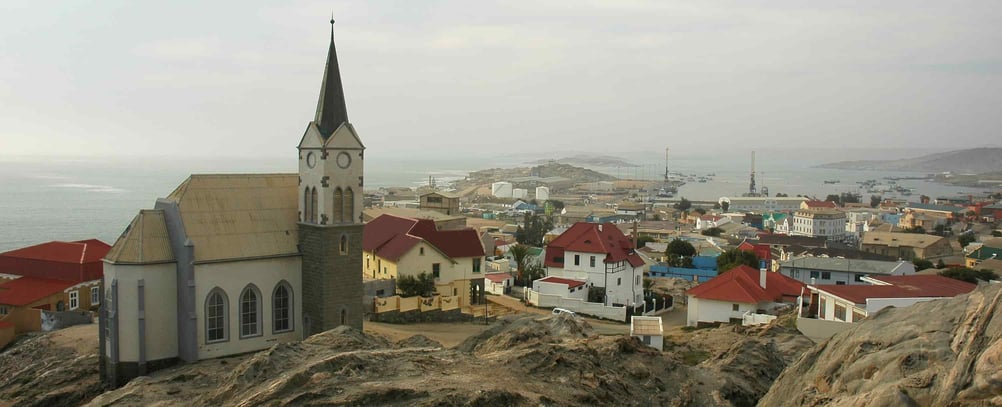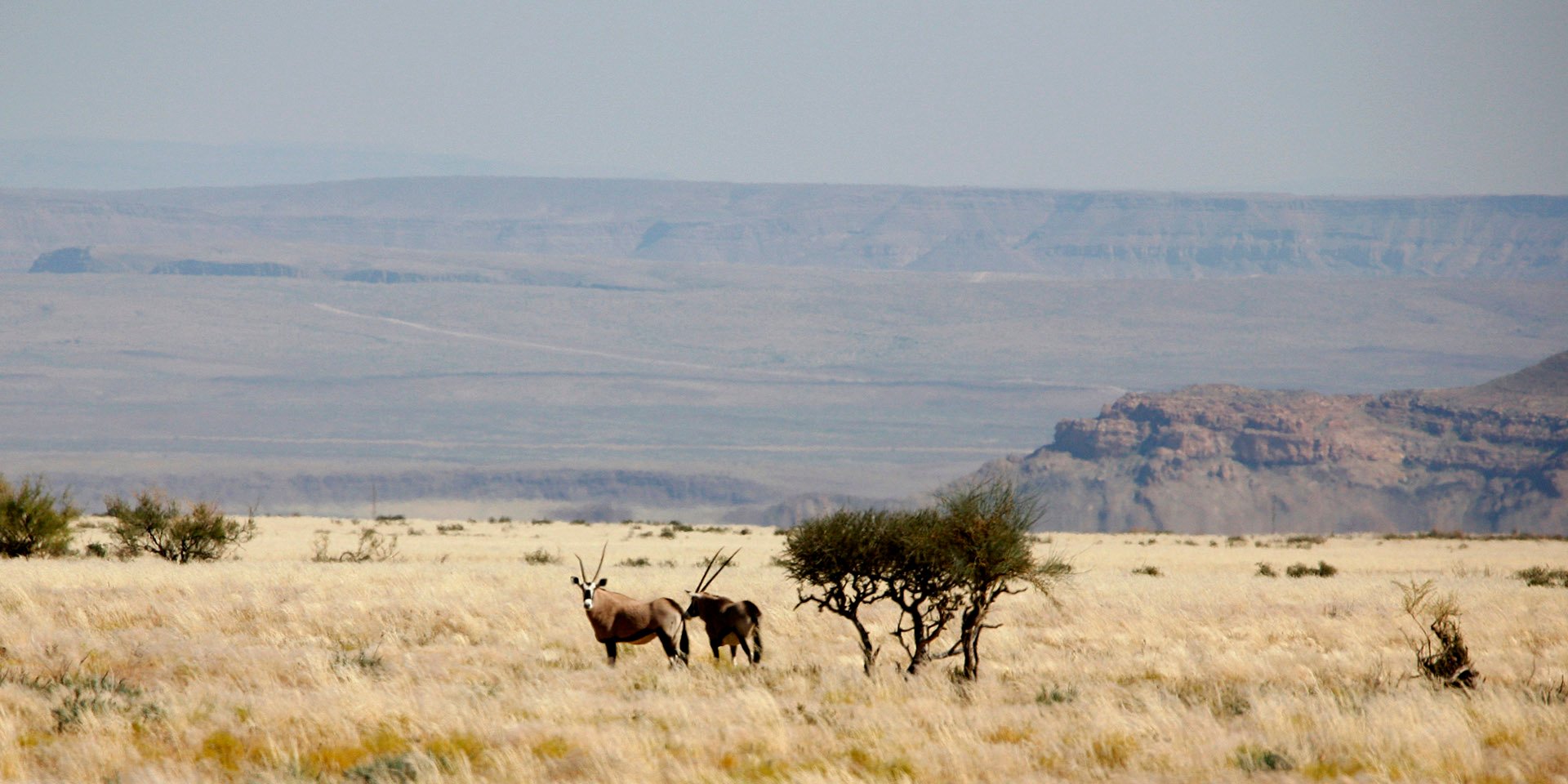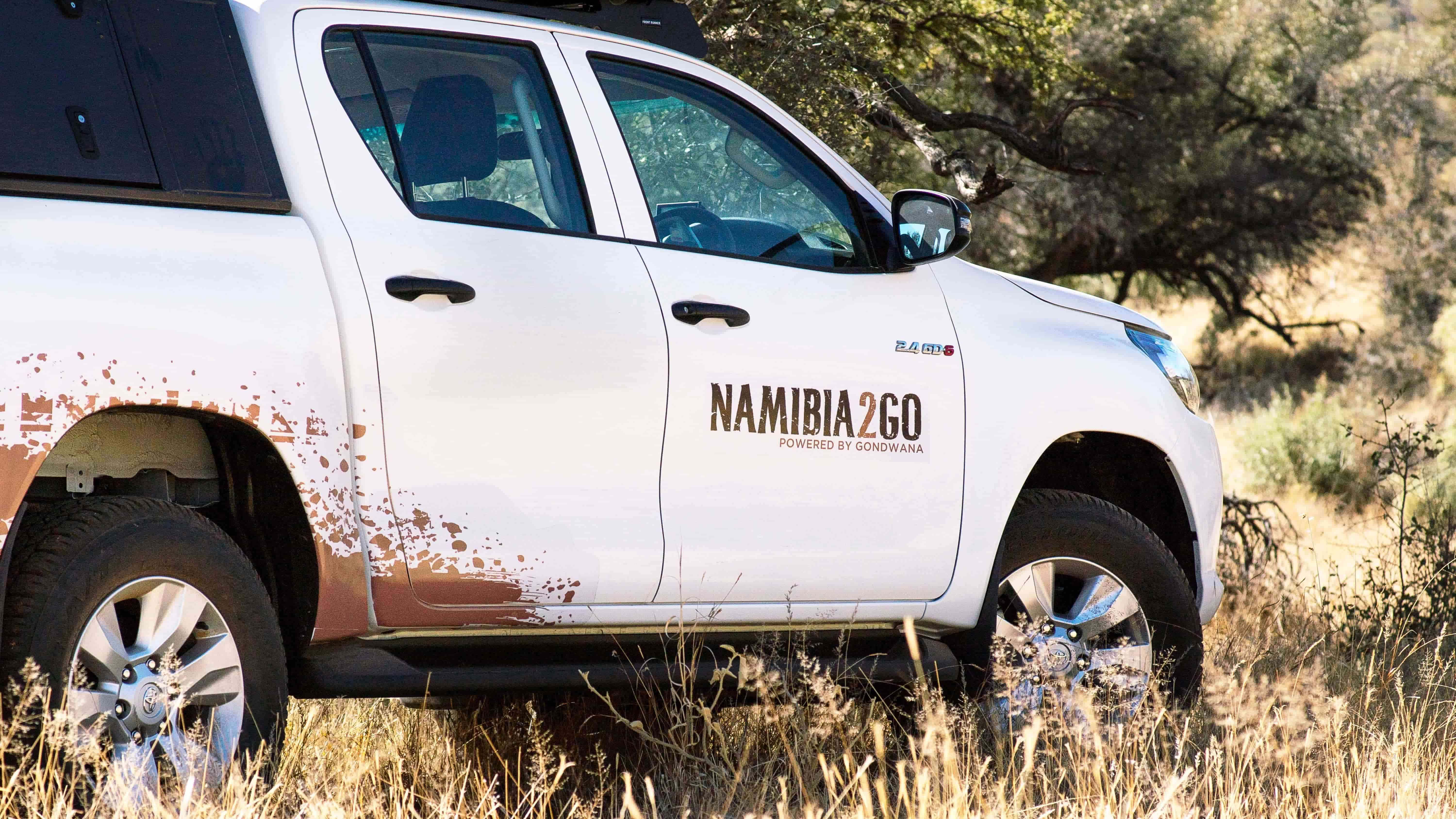Defying the elements, Felsenkirche (the Church on the Rock) has been overlooking the small harbour town of Lüderitz for exactly 100 years.
The church is an architectural gem, built onto the granite of Diamantberg (Diamond Hill). Whether the patrons wanted to express that the Christian church is based on the belief in Jesus Christ as firm as a rock is subject to guessing. Probably Saint Peter the Apostle also acted as godfather when Felsenkirche was given its name, because Peter is derived from the Greek word ‘petros’ which means rock or stone.
When Felsenkirche was consecrated on 4 August 1912, Lüderitz was a thriving little town of some 1,100 white inhabitants, most of them German. Diamonds had been discovered four years earlier during construction work on the narrow gauge railway line to Keetmanshoop. Since then Lüderitz had rapidly developed from a modest settlement with a few barracks into a rather prosperous town with a flourishing commercial harbour. Diamond mining increasingly turned into an industry, fortune hunters flooded into the country and Kolmanskuppe was built close to Lüderitz as a result of the diamond rush.
At the foundation assembly of the Evangelical Lutheran congregation on 10 May 1909 the 42 parishioners confirmed their membership in writing. In the months which followed there were heated discussions about the costs of building a church for themselves until the opponents finally gave in to the advocates of the construction project. The church was to become the colonial congregation’s refuge in Lüderitz. On 19 November 1911 the first stone was laid with a ceremony and a prayer service: “(...) We are building this house of worship to bear witness that we have not forgotten what our prosperity and our fortune is based on; that we are aware of our responsibility to provide a haven for the sons and daughters of the German home country where heart and soul look for tranquillity and are able to find peace in God (...).” (Rust, p. 15)
The church was designed and built by German architect Albert Bause. Shortly before laying of the first stone he was instructed to save costs by reducing the overall height of the church and keeping the interior somewhat smaller. Despite the saving efforts Felsenkirche turned out as a formidable building with seating for 140 worshippers. This church has a natural air of exaltedness about it because you always look up at it from below, no matter from which side you approach.
The architectural style is neo-gothic with Victorian elements which Albert Bause probably became familiar with while living in Cape Town before moving to German South West Africa. Total construction costs amounted to 46,000 Goldmark.
A large part of the costs was covered by donations, mostly from Germany, which Pastor Alexander Metzner gratefully acknowledged in his consecration service 100 years ago. By then, within just two years, his congregation had increased to 800 members. “Associations and private individuals have generously provided for us. [...] How richly the interior of our house of God is furnished; [...] each single piece of the furnishings represents experienced brotherly and sisterly love, from the precious gifts of German princes and benevolent friends of considerable means to the donations which accumulated from small amounts.” (Sörries, p. 38)
Some of these gifts can still be admired in the windswept church today: the large stained-glass window at the altar, portraying ‘Jesus calming the storm’, was donated by Emperor William II. His spouse, Empress Augusta Victoria - colloquially nicknamed Church-gusta - because of her dedication to working for the church - sent a valuable, richly ornamented altar bible with a personal inscription to the faraway colony in southern Africa.
The stained-glass triptych Luther window was donated by Prince Joachim Albrecht of Mecklenburg. At the time he was president of the German Colonial Society which in turn had donated the site for the church.
The generous donors not only provided material support with their gifts but also spiritual support for the colonialists’ difficult mission. Living conditions in the thriving harbour town wedged between the desert and the ocean were tough. Either the sun beat down relentlessly or a storm was howling, flies were a pest and so were sand fleas. In a letter which Pastor Metzner wrote in connection with construction work on the parsonage in 1910 he mentioned that conditions were “the most awkward imaginable,” especially for children. “No water, no milk and subsequently a high rate of child mortality. And given the exorbitant prices a family with many children simply would not be able to make it here (...).” (Kauffenstein, p. 79)
Even though the congregation still had to pinch and scrape, congregational life began to flourish. Soon enough it all came to a sudden end, however, when the First World War broke out in 1914 and German South West Africa was invaded by South African troops. The German colonial troops were outnumbered by far and capitulated in July 1915. Administration of the former German colony was taken over by the Union of South Africa.
The pastor and the congregation were deported, most of them lost all their belongings. Part of Felsenkirche was ransacked. On his return in 1919 the pastor pressed charges for church robbery which came to nothing, however. That year the congregational council took stock and concluded that “as a result of repatriations the congregation suffered considerable losses in membership numbers. Numerous churchgoing public servants as well as many families and bachelors left the country either by force or on their own account. Rampant influenza has inflicted more losses on the congregation.” (Kauffenstein 1983, p. 82)
From 1920 diamond mining shifted further south and Lüderitz increasingly lost its significance as a commercial centre. The town had a modest fishing industry and several boat builders’ yards. There were also a few small carpet weaving mills which used the wool of Karakul sheep, then termed the ‘black gold’ of Namibia’s south. Despite these changes Felsenkirche maintained its exalted position as the landmark of Lüderitz. It witnessed the resistance that the pastor and the church council put up against the instructions received from the National Socialists in Germany, and how the congregation helped internees during the Second World War. Felsenkirche was declared a National Monument on 21 September 1978.
These days the German Evangelical-Lutheran congregation in Lüderitz has some 50 members and is part of the congregation in Swakopmund. A church service is held once a month. The centenary will be celebrated on 19 August.
Felsenkirche is open to visitors once a day for an hour before sunset (16h30-17h30 in winter, 17h30-18h30 in summer). Late in the afternoon the atmosphere is at its best when the setting sun is flooding through the precious stained-glass windows and illuminates the church with glorious light.
The Gondwana History series is a selection of memorable glimpses of Namibia’s history. Collections of the stories are also published as several small volumes in English, German and Afrikaans. The latest one, Gondwana History III, is available since early June at the offices of the Gondwana Collection in Klein Windhoek (42 Nelson-Mandela-Avenue), all the Gondwana lodges and in bookshops.






SUBMIT YOUR COMMENT